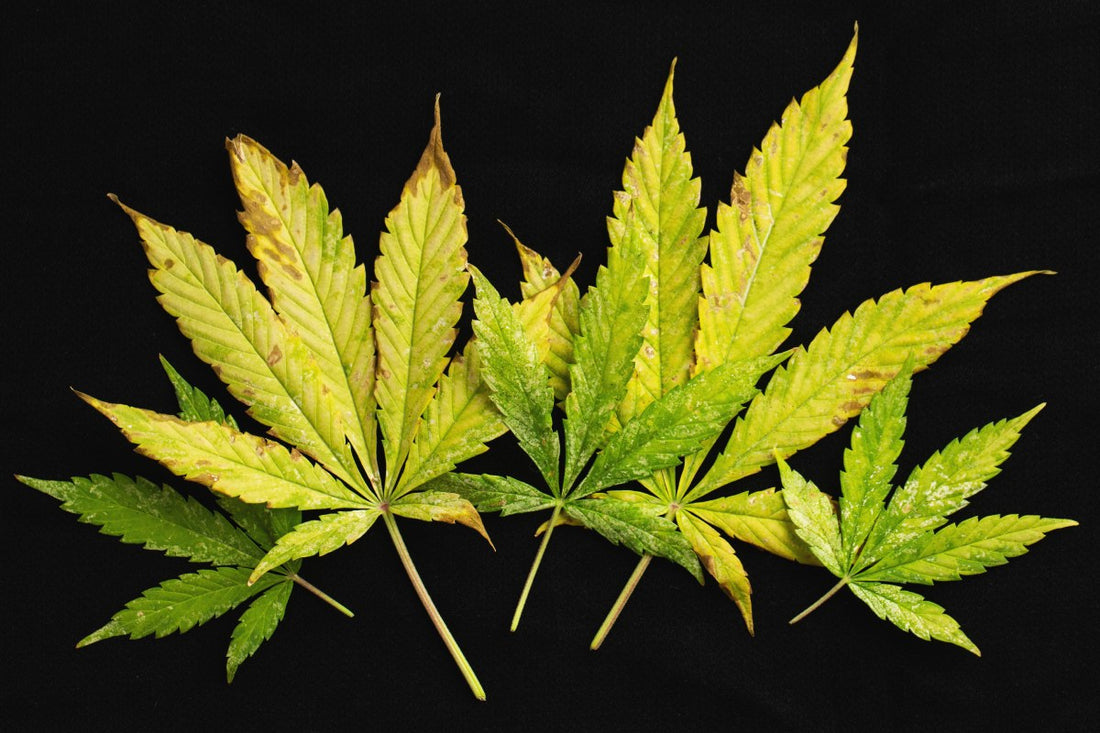
Cannabis Leaves Curling Up: Causes and Solutions
The Curious Case of Cannabis Leaves Curling Up: Causes, Solutions, and Prevention
In the world of cannabis cultivation, healthy plants are the cornerstone of a successful harvest. Among the myriad signs that can indicate health issues in cannabis plants, leaf curling is a symptom that often alarms growers. This phenomenon, where the edges or entire surface of leaves curl or roll upwards, can be a sign of several underlying issues ranging from environmental stressors to pest infestations. Understanding why cannabis leaves curl up is essential for growers looking to ensure the vitality and yield of their plants.
Unraveling the Mystery: Why Do Cannabis Leaves Curl Up?
Leaf curling in cannabis plants can be attributed to a variety of factors, each requiring a unique approach for resolution. Here's a deep dive into the common causes and their implications for plant health.
Environmental Stressors
- Heat Stress: Excessive heat is a frequent culprit behind curled leaves. Cannabis plants thrive in a controlled temperature range, and when exposed to high temperatures, especially under intense lighting, the leaves can begin to curl up as a protective mechanism against moisture loss.
- Watering Issues: Both overwatering and underwatering can lead to leaf curl. Overwatered roots struggle to oxygenate properly, leading to nutrient uptake issues, while underwatered plants dry out, causing leaves to curl and conserve moisture.
- Humidity Fluctuations: Similar to temperature, cannabis plants prefer specific humidity levels. Too low or too high humidity can disrupt the plant's natural transpiration process, leading to curled leaves.
Nutrient Imbalances
- Nutrient Burn: Over-fertilization can cause nutrient burn, where the tips of leaves turn yellow or brown and curl up due to the excess salts and minerals.
- Deficiencies: Conversely, a lack of essential nutrients, particularly calcium and magnesium, can lead to undernourished plants with curling leaves as they struggle to maintain normal cellular functions and growth.
Pests and Diseases
- Pest Infestations: Certain pests, like spider mites and aphids, feed on the sap of cannabis leaves, causing them to curl and deform. These pests can also introduce viruses that further damage the plant.
- Fungal Diseases: Fungi like powdery mildew can also lead to leaf curling. As the fungus spreads, it affects the plant's ability to photosynthesize and respire, leading to curled leaves as a sign of distress.
Diagnosing Curling Cannabis Leaves
Identifying the cause of leaf curling requires a careful examination of the plant and its growing conditions. Start by assessing the environmental factors such as temperature, humidity, and watering schedule. Next, examine the plant for signs of pests or diseases, and review your fertilization routine to check for potential nutrient imbalances.
Solutions and Treatment Strategies
Addressing leaf curling involves correcting the identified issues while ensuring optimal growing conditions for your cannabis plants.
- Adjust Environmental Conditions: Ensure that your grow room or outdoor garden has adequate ventilation and maintains appropriate temperature and humidity levels. Utilizing fans, air conditioning units, or humidifiers/dehumidifiers can help stabilize conditions.
- Optimize Watering Practices: Allow the top inch of soil to dry out before watering again to prevent overwatering. Conversely, ensure that plants receive enough water to avoid drought stress.
- Regulate Nutrient Delivery: Use a balanced fertilizer and follow recommended dosages to avoid nutrient burn. If deficiencies are suspected, supplement with the specific nutrients your plant is lacking.
- Pest and Disease Management: Implement integrated pest management (IPM) strategies to control pest populations and use fungicides to treat affected plants if fungal diseases are present. Regularly inspect plants for early signs of infestation or disease to prevent widespread damage.
Preventive Measures to Keep Cannabis Leaves Healthy
Prevention is key to avoiding leaf curl and ensuring the health of cannabis plants. Here are some strategies to prevent common issues:
- Routine Monitoring: Regularly check your plants for signs of stress, pests, or diseases. Early detection can make treatment more effective and prevent spread.
- Environmental Control: Maintain a controlled environment that mimics the optimal conditions for cannabis growth. Use timers, thermostats, and hygrometers to automate and monitor your growing environment.
- Proper Nutrition: Follow a balanced fertilization schedule tailored to the growth stage of your cannabis plants. Avoid the temptation to over-fertilize in pursuit of faster growth.
- Cleanliness and Hygiene: Keep your grow area clean and free of debris to minimize the risk of pests and diseases. Sterilize tools and equipment regularly to prevent cross-contamination.
Conclusion
Cannabis leaves curling up can be a distressing sign for growers, signaling potential health issues that could impact the plant's development and yield. By understanding the various causes of this symptom, carefully diagnosing the problem, and applying targeted treatments, growers can effectively address leaf curling. Implementing preventive measures and maintaining vigilant care can further safeguard against future occurrences, ensuring that your cannabis plants remain healthy and vibrant throughout their growth cycle.
With patience, attention, and the right care strategies, overcoming the challenge of curling cannabis leaves is well within reach for growers of all experience levels. The key to success lies in the commitment to understanding and meeting the complex needs of cannabis plants, ensuring a rewarding cultivation experience and a bountiful harvest.
